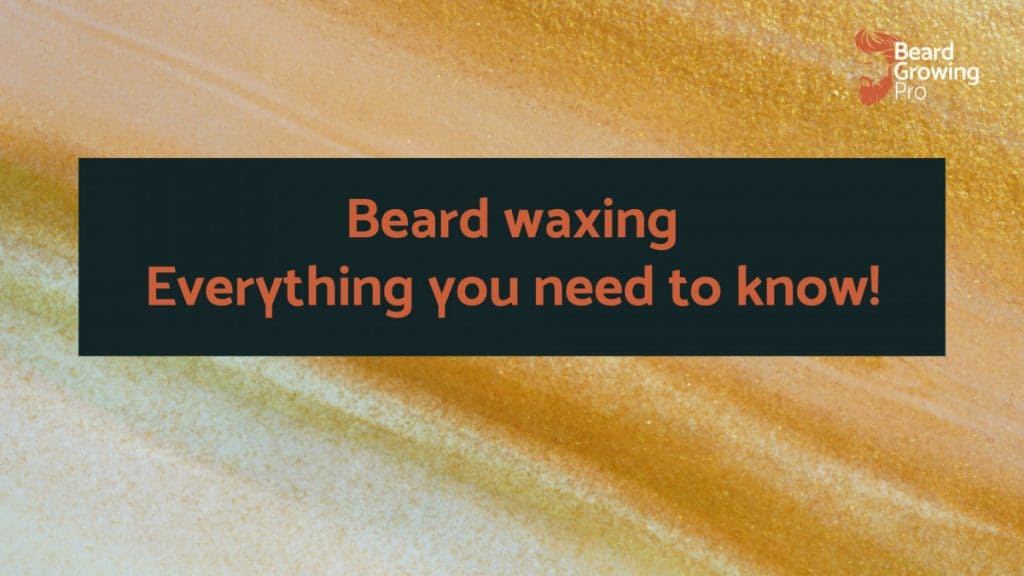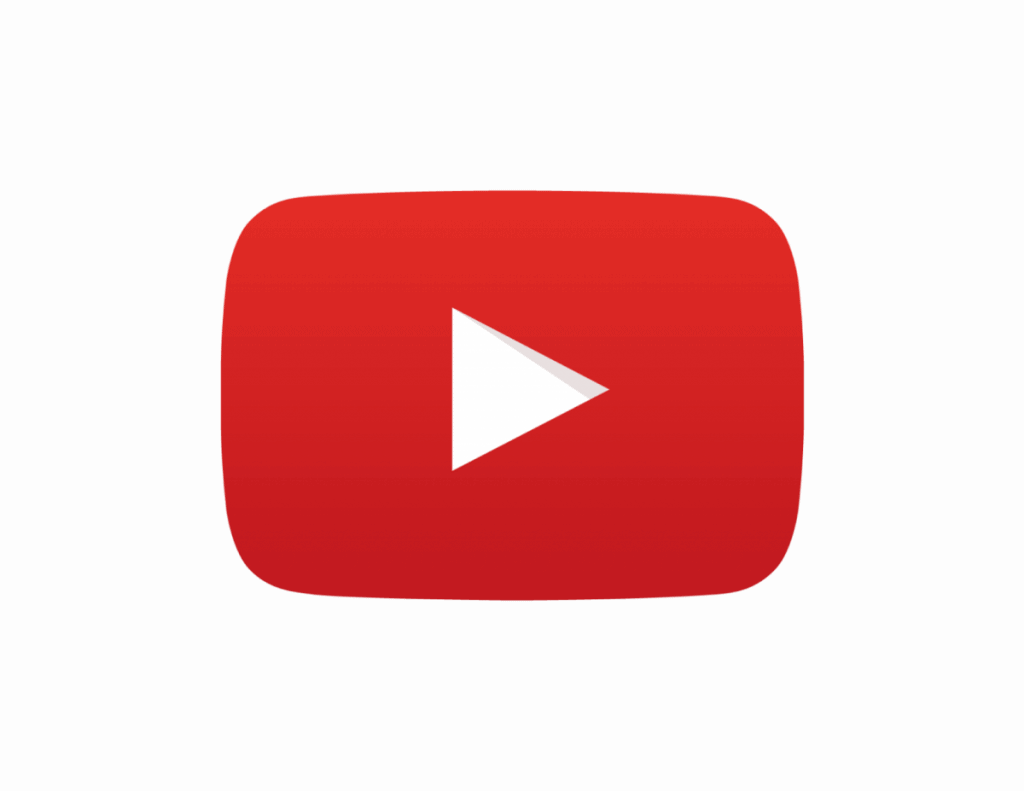Waxing off their beard isn’t something that every bearded man has thought of however, it could offer a viable alternative to regular shaving and trimming which keeps a beard in tip-top shape. Whenever you think of waxing you may think of the redness, pain, and other downsides of putting hot wax on your face and ripping it off. In this article, we talk about everything you need to know about beard waxing and its safety, effectiveness, and best practices for getting rid of facial hair using wax.
Beard waxing is the process of using hot wax or cold wax strips to physically remove the hairs from the cheeks, neckline, and other parts of the face. It is an effective alternative to shaving the cheekline and neckline of a beard and lasts for approximately 6 to 8 weeks.
Although waxing is painful on sensitive areas of the body such as the face – it may be a suitable alternative for people without sensitive skin who want a longer-lasting effect from their grooming efforts.
The act of waxing your face is a relatively intense way of removing beard hair which can lead to a variety of undesirable effects on your facial skin and hair. But exactly how safe is it to actual beard?
Is it safe to wax your beard?
The act of waxing your face is relatively safe as long as you use all of the appropriate sanitization procedures before applying wax to your skin and face.
If you have particularly sensitive skin you may want to skip waxing your cheek line and neckline as it is much harsher on the skin than using a razor blade.
The redness that accompanies a waxing session is common for many people.
It is common after waxing a certain area of your face to see some small blood patches which is blood emerging from ruptured hair follicles. As long as the bleeding stops as soon as you have waxed your cheek line and it does not continue there is typically no long-term problems. Because the hair on your face is much thicker than other hair on your body the small blood patches are much more common.
Making sure that you use the right technique can significantly decrease the amount of redness, irritation, and reactions you have to the wax. We will go over the appropriate way to use wax later in the article. But, quickly, it involves using the right tools as well as holding the skin taught and applying the appropriate after-care. If you are unsure about the appropriate way to actual face I highly recommend going to see a professional waxing.
The temperature of the wax is also very important for making sure that the wax adheres comfortably to the hairs whilst also not being so hot as to burn or irritate the skin.
If waxing off your beard results in breakages of the hair rather than the hair being removed from the root it can cause a significant amount of ingrown hairs which can sometimes lead to small pus-filled pimples on the surface of the skin. The risk of pus-filled pimples on the surface of the skin increases if the cleanliness of the equipment you are using is substandard.
Downsides of waxing your beard
Waxing hair on your face can cause a load of undesirable side-effects. Even if you manage to get all of the beard hairs of your face in one go you are likely to also experience some other side-effects such as:
- Pain
- Redness
- Sun sensitivity
- Bleeding
- Rashes
- Ingrown hairs
Like we talked about, above, the skincare routine for after waxing involves exfoliation and moisturising regularly. This will be in place of your typical shaving routine and so you don’t really save much time if you wax your beard and stubble regularly.
I once got a back, sack and crack wax and I can assure you that the pain was almost intolerable. The amount of pain that you would need to sit through during a facial waxing is almost inconceivable and for most people it would not be something they would be able to endure regularly.
How long does waxing your beard last?
If you wax your beard you can expect for the results to last for up to 6 weeks. However, this does not mean that your face will be completely free of some form of hair for this time. You should start seeing the new hair growth at around the three week mark.
This comes with a caveat: it is up to 6 weeks as long as the hair has been completely removed from the root and hair follicle. It is very common, with bad waxing techniques, that the hair simply snaps off at the root rather than being completely removed.
A number of factors such as wax quality and density of the hair will determine how successful each waxing strip removes beard hairs.
If you’re waxing strip ends up breaking the majority of the hairs you’ll start to see growth in as short as a few days. This is because the effect, in this instance, is like shaving. If the hair breaks the beard hair will only be at the surface level of the skin and you will feel stubble within only a couple of days.
If you want to be sure that your hair is completely removed and that you can enjoy the maximum amount of time in between waxing I would recommend going to a professional in order to get your beard hair waxed efficiently and effectively. If you go the DIY route with your beard waxing it is likely that you will see an increase of broken hairs.
Is it better to wax or shave facial hair?
Whether or not something is better is completely subjective and comes down to the risk versus the reward. For example, if you are shaving your facial hair you do not have as long a time in between shaving as you would if you waxed your beard. However, waxing can be very painful and is not foolproof which can result in hairs snapping off at the surface level of the skin which means that you could end up with the same result as shaving your facial hair.
In this YouTube video, the creator shaves half of his face and wax is the other half of the beard.
From watching the video you can see that shaving is certainly the more convenient – as it simply involves the use of a razor blade – and waxing is much more painful resulting in redness of the skin and inefficient removal of the beard hair. The content creator had to go back to shaving his beard even after waxing as there was so much hair left after the waxing process.
If you are only using waxing to clean up your cheek lines and neckline the process is a much less painful experience and can result in significantly longer times in between treatment.
It is certainly not advisable to completely wax your entire beard but wax can be utilised to define the lines of your beard which we will talk about in the next section.
How to wax your beard
When you are waxing your beard, you have a range of options for where and how you use the wax. You can use waxing strips to line up the top cheek line and the neckline of the beard so that you don’t have to shave there as often.
Here is a YouTube video of someone getting a waxing session on their cheeks in order to shape up their beard.
You will notice that the professionals have already lined out the areas which need to be waxed with an eyeliner pencil which enables the beard to be incredibly symmetrical and reduces the error that could be encountered by simply eyeballing it.
As soon as the wax is ripped off the professional beautician applies pressure which is known to alleviate some of the painful heat sensations that accompany waxing.
If you are waxing your cheek line at home here are the steps that you need to go through.
Gather the things you need
Firstly, you need to gather all of the appropriate things that you need and make sure that they are clean and free from dirt and grime.
Here is everything that you need.
- Wax (cold strips, warm wax)
- Pre-wax cleanser (for shorter stubble like hairs)
- Talc-free powder
- Wooden applicators (popsicle sticks)
- Wax remover or oil for the skin
- After- wax lotion or aloe based gel
- Tweezers
The sort of wax that you use is completely up to your personal choice as well as the type of skin that you have. Cream wax heated up in a wax pot is a great option for most skin types and hair types. That is because it is delicate on the facial area. It’s also easier to work with than honey waxes because it is much less sticky. While cold wax strips work relatively well for less thick and dense areas of the body they are not strong enough to grab onto the thick hairs of your face.
If it’s your first time waxing you should set aside about 30 minutes to complete the full waxing process and to tidy up afterward.
Waxing your beard hair
Before you wax your beard hair you should check to see if the hair on your face is the right length. He should be about 1 cm in length or about one-quarter of an inch long. This will give the wax plenty of hair to grab onto so that it doesn’t break at the root.
- Heat up the wax in a wax warmer until it is warm and not too hot. It should have the consistency of peanut butter not oil. If it looks like oil it is far too hot and you should sit and let it cool down until it has the consistency of peanut butter or honey.
- Apply the wax evenly along your cheek line in the direction of the hair growth. You want enough wax to thoroughly cover the hair the not so much that it becomes too thick to remove. This is a balancing act that you will get used to as you practice using wax to remove your facial hair.
- Next, apply a waxing strip in the direction of the hair growth and leave a little bit of the strip at the end which is unattached to the hair – like a little tab – which you use to pull off the waxing strip and wax.
- Once the wax has cooled down a little bit and it has stuck to the strip you should use one hand to pull the skin taught whilst using the other hand to pull the strip in the opposite direction of the hair growth in one quick and even pull.
If a little bit of wax remains on your face simply put the strip back on top of it and pull it off again in the same way.
Work in sections across your cheek line until you have removed all of the hair that you want removed. Don’t apply wax over the same area multiple times as it will increase the irritation significantly.
If you are particularly brave, you can use tweezers to remove the hairs which were left behind by the wax. Then, you can use a wax remover or oil – like a beard oil – to remove any remaining wax residue from hairs for places that you have over applied the wax.
TOP beard waxing TIPS:
- Practice on your arm or leg hairs before your facial hair.
- Use a numbing cream or spray if it hurts too much.
- Do your waxing in front of the mirror or get some one to help you.
Cheek line
Waxing the cheek line is probably one of the most useful ways of utilizing wax to enhance your beard style.
The hairs are likely to be sparse enough to be able to be waxed efficiently.
To remove the hairs from your cheek line with wax you should use a waxing strip – typically used for eyebrow hairs – for grabbing and waxing away the hairs.
If you are adventurous, you can try a hot wax method that involves melting wax applying it with a popsicle stick, and then using a fabric layer to grab onto the works and pull it away from your skin.
Neckline
The neckline can be sparsely populated but because of the sensitive skin in the area, it is likely that the pain will be far more than you are willing to tolerate.
However, using a gentle waxing method and making sure that you are getting all of the hairs in one go will reduce the inflammation and swelling by having to do multiple passages on the same area.
Cheeks and chin
Using wax on the cheek and chin area of your beard will be the most challenging. This is where the hairs are the densest and the thickest in most men.
You can use a variety of different waxing methods for removing the hair on your cheeks and chin with wax but using sugar wax maybe your best option.
Maybe a sugar wax is better for you?
A 2001 study conducted by the Department of dermatology, Wake Forest University School of medicine, NC, USA. They found that sugaring is a cost-effective method and is a practical method of hair removal which results in hairless and exfoliated skin.
This is the method for producing your very own sugar wax for sugaring your face:
- mix 2 teaspoons of lemon juice with 2 tablespoons of sugar
- add about 9 teaspoons of water
- heat the mixture over a low heat until it is completely combined
- allow the mixture to cool down
- apply it to your skin in the direction of the hair growth
- let it dry on your skin for at least 20 minutes.
- Rub in a circular motion to remove the sugar
- rinse the remaining sugar with cold water
- repeat this method up to 3 times per week for a few weeks.
This method is suitable for all types of skin.
You have to be careful that you are not applying the sugar solution to your skin when it is too hot as you could risk scolding your face. Follow up this process with some moisturizer and you will not write your skin completely.
Mustache
A friend of mine used to pluck his mustache hairs individually with tweezers. I can’t think of anything more painful.
Waxing the mustache area of your beard is going to be painful and tricky to grab the hairs reproducibly.
If you decide to wax any part of your face, please be aware that you will probably have two regularly exfoliate and moisturize and replace the time you would have spent shaving with a skincare routine.
Does waxing facial hair make it grow back thicker?
Despite what you may read online (apart from this blog) there is no evidence that the waxed hair will grow back thicker. Everyone seems to have their own opinion, but it will either grow back at the same density but will be lighter hairs as they are newly formed or, as the hair route becomes damaged over multiple sessions, the hair will thin out.
In the worst-case scenario where the hair is not pulled out by the root but snaps off at the surface of the skin leaving the hair route behind, the hair can look dark as its cross-section relative to the skin has increased.
Just like when people say no shaving makes their beard look thicker – it’s that they have removed the natural taper of the hair and it just happens to be an illusion of extra thickness.
Summary
In this article, we have covered everything you need to know about beard waxing and how you can do it safely.
Because of the significant amount of pain is associated with waxing your beard it will probably not be used to remove your beard in the same way that shaving is used. That said, you can use beard waxing to line up your beard and create a style that last longer than shaving alone.



